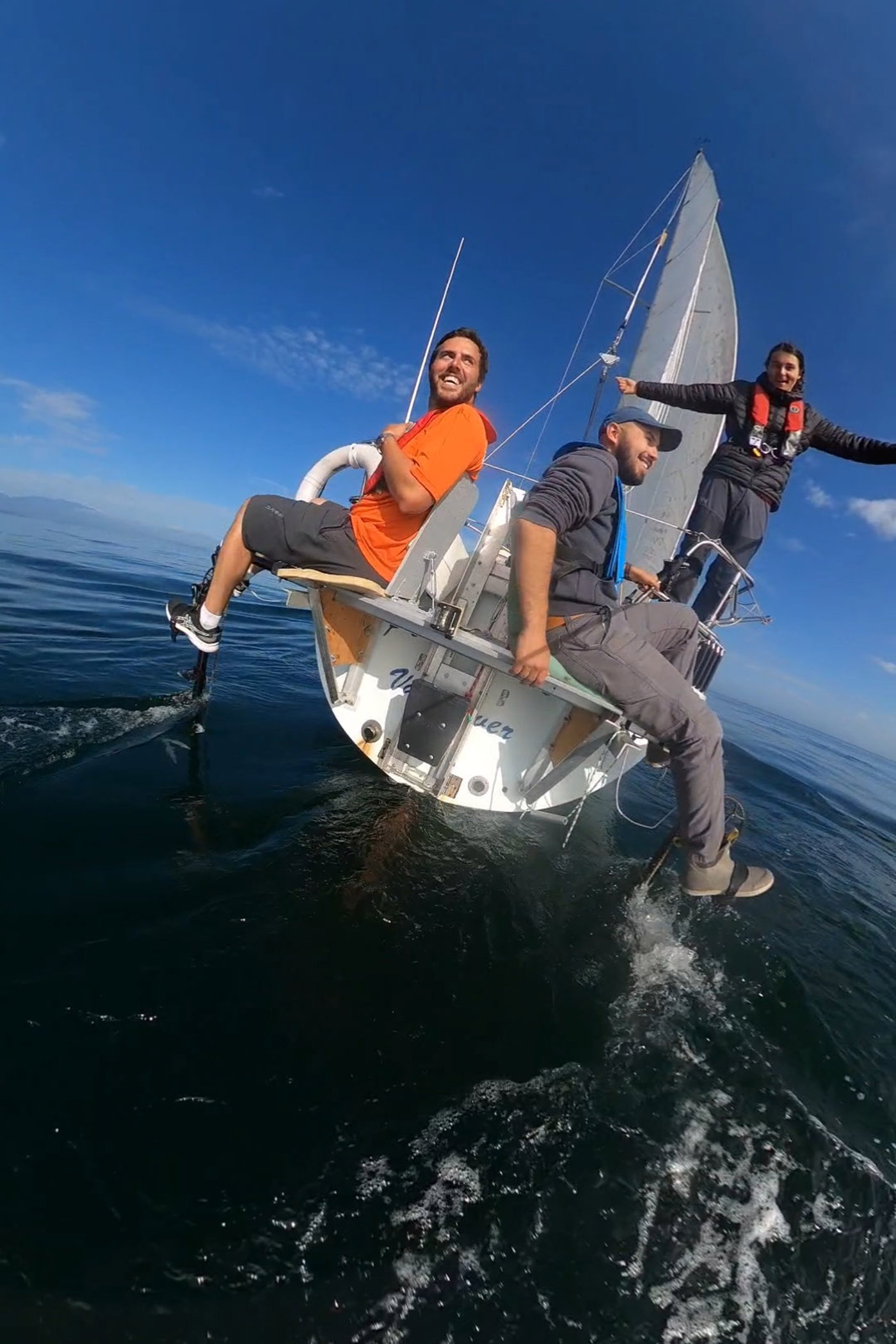It took three tries, but a father-son team from Chilliwack finally finished a 1,200-kilometre boat race from Washington State to Alaska this week in a pedal-powered, dual-propeller sailboat.
Lionel Jensen and his father Randy Jensen, along with their team, completed the Race to Alaska on June 23 aboard their 1981 Yamaha 30-1, a 30-foot monohull sailboat named Periwinkle.
"We made it to Ketchikan!" Lionel wrote in an email to The Chilliwack Progress.
Although this was the third time they set sail on the race, this year actually marked the sixth time the father-son team had either taken part, or was ready to take part, in the race. But, each year they were met with bad luck, boat issues, or cancellations.
In 2019, they quit when they reached Port McNeill after experiencing boat problems and choppy waters. In 2020 and 2021, they were ready, but the pandemic put the kibosh on the race. In 2022, they had to quit in Comox because Lionel had COVID. And last year, they were ready to sail but Lionel broke his elbow right before the race.
"Now, in 2024, we've finally made it," Lionel said. "In a time of 11 days, 10 hours, 45 minutes. Much faster than the 15 days I'd expected."
The Race to Alaska is known as an unsupported (engineless) race from Port Townsend, Washington to Ketchikan Alaska. It's North America’s longest human- and wind-powered boat race, and this year 28 teams competed, 21 of which finished.
"The only rule is you're not allowed to have an engine on your vessel. At all. Pulling the diesel engine out of our sailboat took four days and put my back out, but rules are rules."
When the sails weren't up, they switched to human propulsion. There were two pedalling stations mounted on the back of the boat where the crew sat back-to-back, each turning their own propeller. In past years they used a pedal-powered paddle wheel, but that was heavier and more cumbersome than the new propellers.

Along the journey, the team battled tidal currents, whirlpools, high winds and more.
The highlight of the trip was on Father's Day.
"Hundreds of miles into the race we found ourselves as close as 30 yards to another racer, team Bonesaw Revengeance Rising, on their much faster Trimaran. This took place in the remote and brutal Johnstone Strait, where we spent 21 continuous hours pounding into heavy wind and waves," Lionel said. "We were so close to each other that we were covering tacks, a tactic used to interfere with the wind of the other boat. After hours of this they finally pulled away. We met them in Port McNeill that night and shared hugs and laughs."
And then there was the all-nighter through Cape Caution, a notorious part of the race where boaters are exposed to the open Pacific Ocean with nowhere to take shelter for many miles.
"The wind turned off as we approached the Cape. From 1 a.m. until 6 a.m., I pedalled while Dad steered and the rest of the crew rested. At times we both fell asleep and I would awake to the boat going the wrong direction."
Other crew members included Ted Moskal from Port Townsend and James Green of North Vancouver. Together they were Team Norepinephrine, named after a fight-or-flight hormone that is produced naturally by the body. Other team names included Knot So Fast, Tips Up and Sailor Swift.
Lionel thanked Dennis and Keith Hammer from Greendale who did a "fantastic job" welding the custom-built pedal drives.
"It felt absolutely surreal to finally make it to Ketchikan. Stepping onto the dock to the cheers of Ketchikan locals and racers who had already finished was an incredible feeling. We placed 18th and finished five days earlier than I expected. An incredible outcome."

